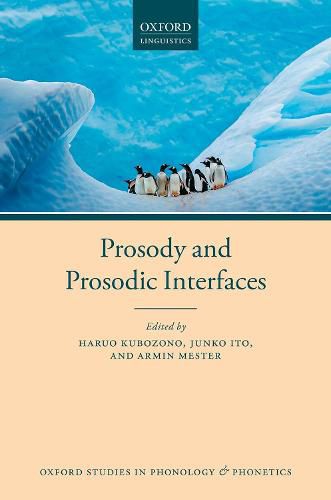Readings Newsletter
Become a Readings Member to make your shopping experience even easier.
Sign in or sign up for free!
You’re not far away from qualifying for FREE standard shipping within Australia
You’ve qualified for FREE standard shipping within Australia
The cart is loading…






This volume brings together new work on prosody and prosodic interfaces from international experts in the field. The book is divided into three parts that explore topics in word prosody and phrase prosody, lexical tone and intonation, and the syntax-prosody interface. While many recent studies have focused on prosody and related questions, a significant number of languages, dialects, and varieties remain largely undocumented or understudied in this respect. The chapters in this volume help to fill this empirical gap, with investigations into languages such as Choguita Raramuri (Mexico), Poko (Papua New Guinea), Rere (Sudan), and Uspanteko (Guatemala), alongside more widely studied languages such as Japanese and Serbian. The authors also address a range of important questions pertaining to, for example, the interactions between lexical and postlexical tones and the relationship between prosodic and syntactic structure. The volume as a whole sheds light on how prosody is structured in language and how it functions in human communication.
$9.00 standard shipping within Australia
FREE standard shipping within Australia for orders over $100.00
Express & International shipping calculated at checkout
This volume brings together new work on prosody and prosodic interfaces from international experts in the field. The book is divided into three parts that explore topics in word prosody and phrase prosody, lexical tone and intonation, and the syntax-prosody interface. While many recent studies have focused on prosody and related questions, a significant number of languages, dialects, and varieties remain largely undocumented or understudied in this respect. The chapters in this volume help to fill this empirical gap, with investigations into languages such as Choguita Raramuri (Mexico), Poko (Papua New Guinea), Rere (Sudan), and Uspanteko (Guatemala), alongside more widely studied languages such as Japanese and Serbian. The authors also address a range of important questions pertaining to, for example, the interactions between lexical and postlexical tones and the relationship between prosodic and syntactic structure. The volume as a whole sheds light on how prosody is structured in language and how it functions in human communication.